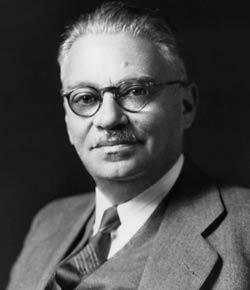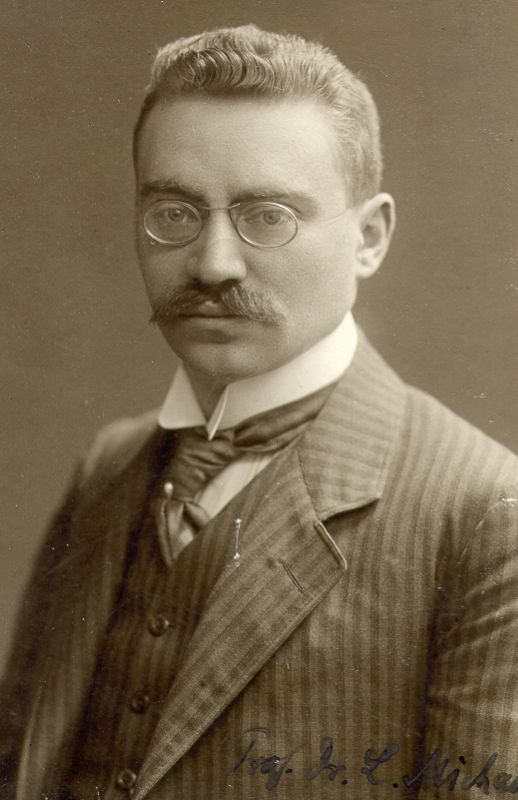<Back to Index>
- Biochemist Leonor Michaelis, 1875
- Writer and Diplomat Louis de Rouvroy, duc de Saint - Simon, 1675
- President of Chile Eduardo Frei Montalva, 1911
PAGE SPONSOR



Leonor Michaelis (January 16, 1875 – October 8, 1949) was a German born American biochemist, physical chemist, and physician, known primarily for his work with Maud Menten on enzyme kinetics and Michaelis - Menten kinetics.
Leonor Michaelis was born in Berlin, Germany, on January 16, 1875 and graduated from the humanistic Koellnisches Gymnasium in 1893 after passing the Abiturienten Examen. It was here that Michaelis’ interest in physics and chemistry was first sparked as he was encouraged by his teachers to utilize the relatively unused laboratories at his school.
With concerns about the financial stability of a pure scientist, he commenced hist study of medicine at Berlin University in 1893. Among his instructors were Emil du Bois - Reymond for physiology, Emil Fischer for chemistry, and Oskar Hertwig for histology and embryology.
During his time at Berlin University, Michaelis worked in the lab of Oskar Hertwig, even receiving a prize for a paper on the histology of milk secretion. Michaelis’s doctoral thesis work on cleavage determination in frog eggs led him to write a textbook on embryology. Through his work at Hertwig’s lab, Michaelis came to know Paul Ehrlich and his work on blood cytology; he worked as Ehrlich’s private research assistant from 1898 to 1899.
He passed his physician’s examination in 1896 in Freiburg, and then moved to Berlin, where he received his doctorate in 1897. After receiving his medical degree, Michaelis worked as a private research assistant to Moritz Litten (1899 – 1902) and for Ernst Viktor von Leyden (1902 – 1906).
From 1900 to 1904, Michaelis continued his study of clinical medicine at a municipal hospital in Berlin, where he found time to establish a chemical laboratory. He attained the position of Privatdocent at the University of Berlin in 1903. In 1905 he accepted a position as director of the bacteriology lab in Berlins Charité hospital, becoming Professor extraordinary at Berlin University in 1908. In 1914 he published a paper suggesting that Emil Abderhalden's notorious pregnancy tests could not be reproduced, a paper which fatally compromised Michaelis' position as an academic in Germany. In 1922, Michaelis moved to the Medical School of the University of Nagoya (Japan) as Professor of biochemistry, becoming one of the first foreign professors at a Japanese university, bringing with him several documents, apparatuses and chemicals from Germany. His research in Japan focused on potentiometric measurements and the cellular membrane.
In 1926, he moved to Johns Hopkins University in Baltimore, Maryland, as resident lecturer in medical research and in 1929 to the Rockefeller Institute of Medical Research in New York City, where he retired in 1941.
Besides his role in the formulation of the famous Michaelis - Menten equation (1913) he discovered Janus green as a supravital stain for mitochondria and the Michaelis - Gutmann body in urinary tract infections (1902) and found that thioglycolic acid could dissolve keratin, a discovery that would come to have several implications in the cosmetic industry, including the permanent wave.
Leonor Michaelis died on October 8 or October 10, 1949 in New York City.
Michaelis was a Harvey Lecturer in 1924 and a Sigma Xi Lecturer in 1946. He was elected to be a Fellow of the American Association for the Advancement of Science in 1929, a member of the National Academy of Sciences in 1943. In 1945, he received an honorary LL.D. from the University of California, Los Angeles.